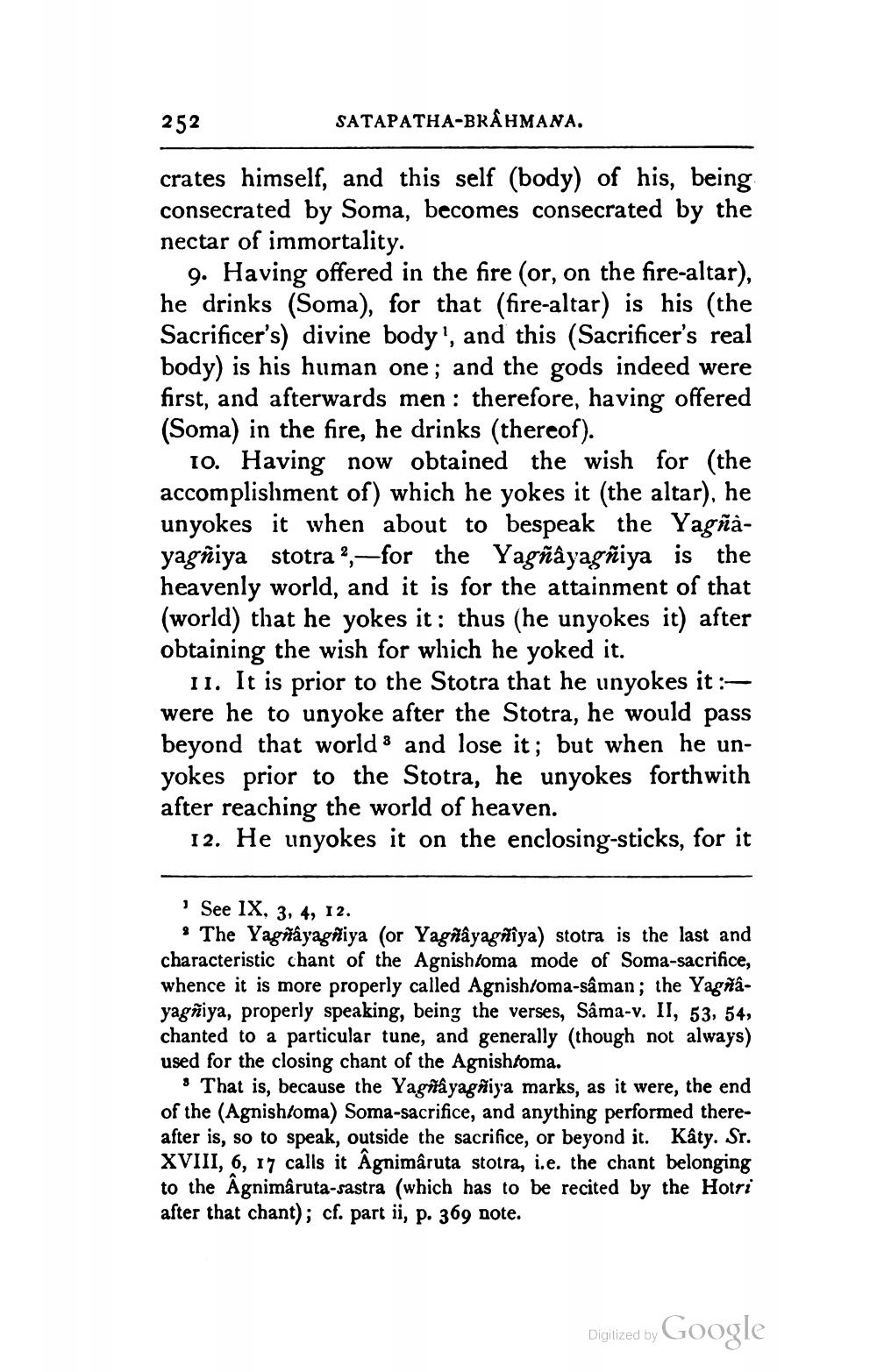________________
252
SATAPATHA-BRÂHMANA.
crates himself, and this self (body) of his, being consecrated by Soma, becomes consecrated by the nectar of immortality.
9. Having offered in the fire (or, on the fire-altar), he drinks (Soma), for that (fire-altar) is his (the Sacrificer's) divine body', and this (Sacrificer's real body) is his human one; and the gods indeed were first, and afterwards men : therefore, having offered (Soma) in the fire, he drinks (thereof).
10. Having now obtained the wish for (the accomplishment of) which he yokes it (the altar), he unyokes it when about to bespeak the Yagñàyagñiya stotra ?,for the Yagñayagñiya is the heavenly world, and it is for the attainment of that (world) that he yokes it: thus (he unyokes it) after obtaining the wish for which he yoked it.
11. It is prior to the Stotra that he unyokes it :were he to unyoke after the Stotra, he would pass beyond that world and lose it; but when he unyokes prior to the Stotra, he unyokes forthwith after reaching the world of heaven.
12. He unyokes it on the enclosing-sticks, for it
See IX, 3, 4, 12.
The Yagñayagiya (or Yagñayagñîya) stotra is the last and characteristic chant of the Agnishtoma mode of Soma-sacrifice, whence it is more properly called Agnish/oma-saman; the Yagñayagñiya, properly speaking, being the verses, Sâma-v. II, 53, 54, chanted to a particular tune, and generally (though not always) used for the closing chant of the Agnishtoma.
• That is, because the Yagñayagñiya marks, as it were, the end of the (Agnishtoma) Soma-sacrifice, and anything performed thereafter is, so to speak, outside the sacrifice, or beyond it. Kâty. Sr. XVIII, 6, 17 calls it Agnimâruta stotra, i.e. the chant belonging to the Agnimâruta-sastra (which has to be recited by the Hotri after that chant); cf. part ii, p. 369 note.
Digitized by Google




